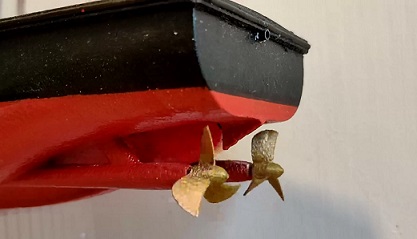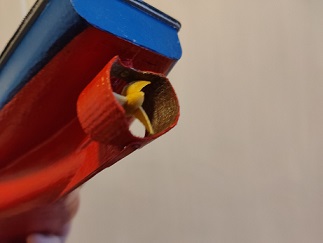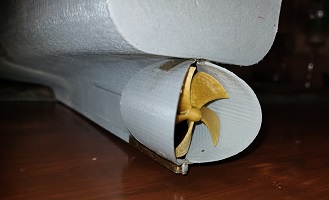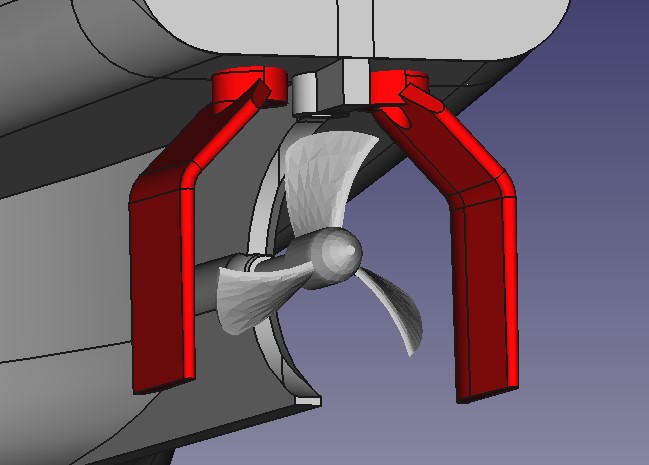Lösungen / Ideen
Zwei Schrauben

Wegen der Symmetrie gibt es hier natürlich kein Außbrechen des Hecks bei Rückwärts.
Die Steuerung bei 'MAX' funktioniert über differential- Schub ohne Ruder.
Außerdem gibt es ein sehr kraftvolles 'Bugstrahl- Ruder'.
Duct- Ruder

Eine Art Ring um die Schraube, ähnlich einer Kort- Düse, ermöglicht gutes Steuern in Vorwärts und Rückwärts.
Dazu ist eine enge Passung zwischen Schraube und Ring nicht unbedingt notwendig.
Das Ausbrechen des Hecks beim Wechsel auf Rückwärts kann leicht ausgeglichen werden.
Bei einem konventionellen Ruder ist das nicht möglich.
Das Schubumkehr- Ruder

Es besteht aus zwei Hälften, die im normalen Ruder- Betrieb parallel arbeiten
In dieser Konfiguration wirkt es wie das Duct- Ruder, ermöglicht aber eine einstellbare 'Düsen'- Funktion.
Bei Rückwärts schließen die beiden Hälften.
Ein großer Vorteil ist dass zum Bremsen die Maschine nicht gestoppt werden muss, es muss nur der Reverser schließen.
Seitliches Ausbrechen kann leicht ausgeglichen werden.
Das Gate Rudder

Das von Japanern entwickelte Gate Rudder ist hier der Vollständigheit halber erwähnt.
Es könnte auch bei Rückwärts eine gewisse Steuerwirkung haben.
Das Schaufelrad- Bug (Heck) -Strahlruder

ERIKA
MAX
MORITZ
RAKETE
AAL
WICKIE
Es ist das alte Schaufelrad 'reloaded', aber funktioniert etwas anders als die albekannte Version. Vorteile sind:
- hohe Leistung
- einfache Technik mit nur einem beweglichen Teil
- keine Löcher durch den Rumpf, auch ohne Ventile/ Klappen (QM2)
- gute Wirksamkeit auch bei höheren Geschwindigkeiten
(meine Tests scheinen das jedenfalls anzudeuten)
Die Theorie hinter diesen Schaufelräder
Zwei Duct- Ruder und differential- Schub
Die Idee ist: Zwei Schrauben und zwei Duct- Ruder.
Dann sollte es möglich sein, das Heck zu einer Seite zu bewegen ohne das Schiff vorwärts oder rückwärts zu versetzen.
Und es funktioniert tatsächlich.
ODIN